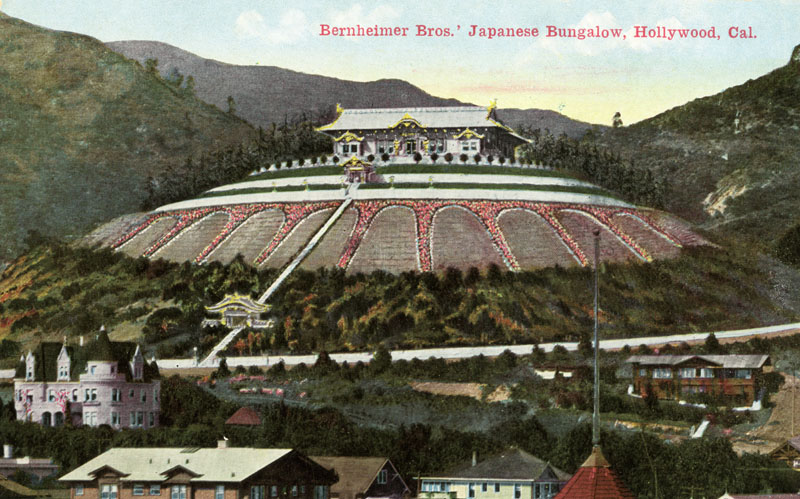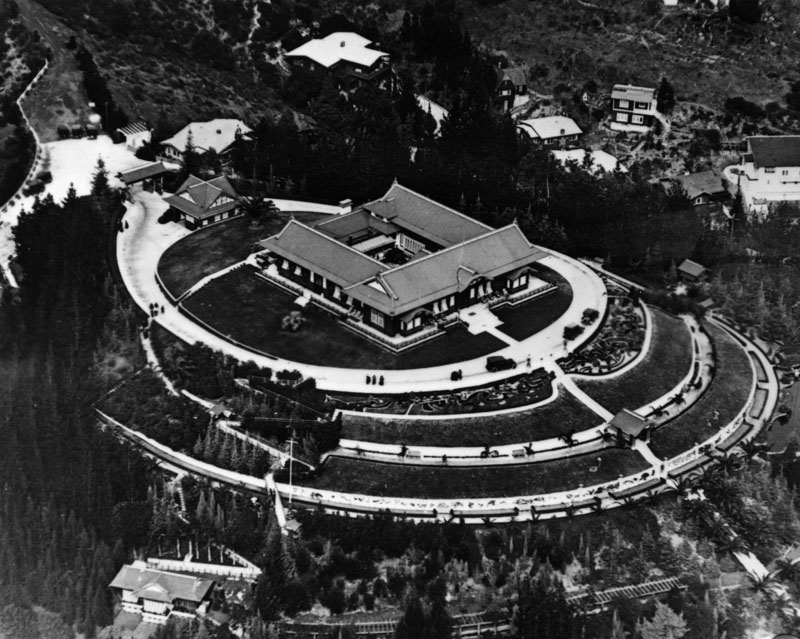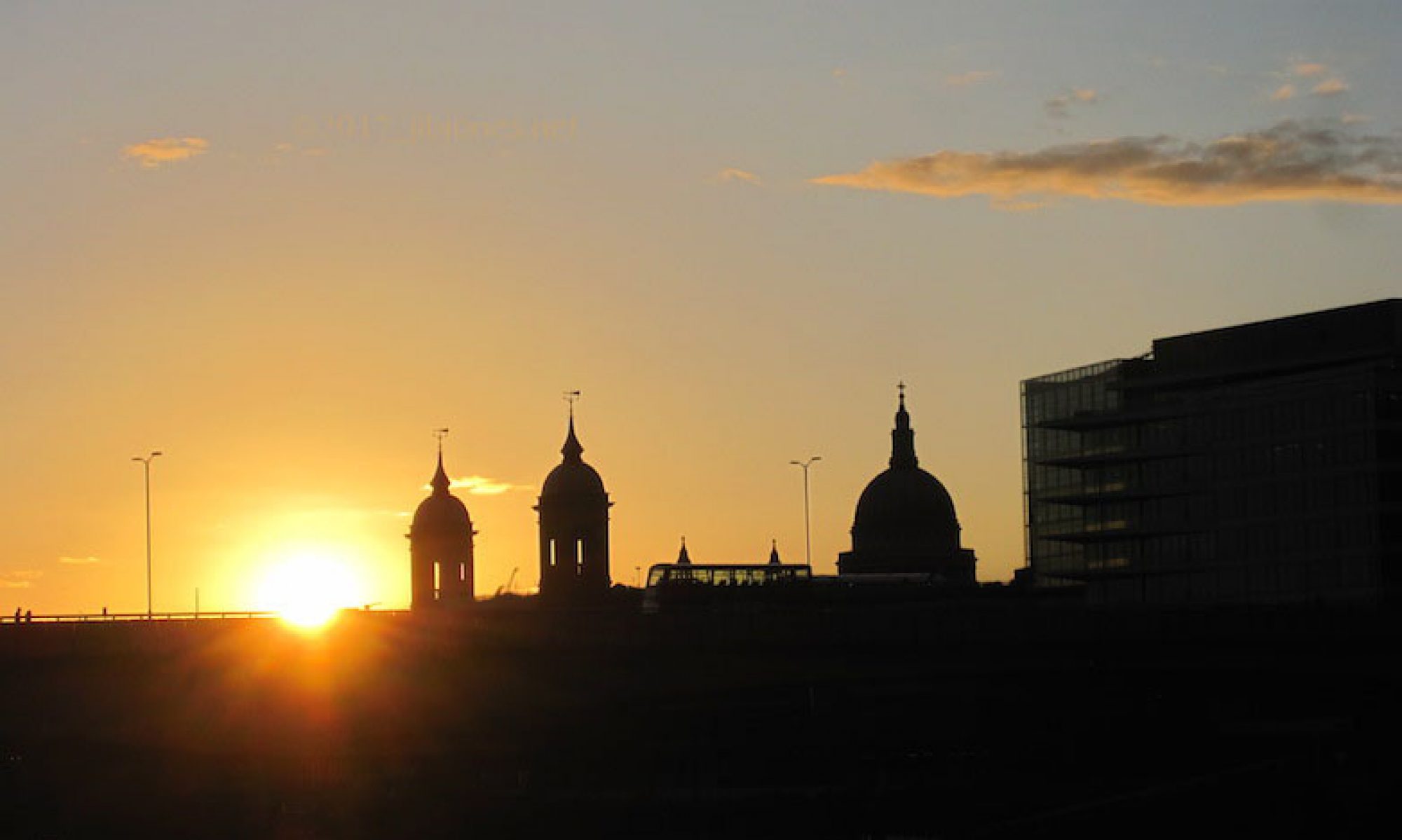
The Bernheimer house in Hollywood was built as the private residence of confirmed bachelors Adolph and Eugene Bernheimer of New York. The Bernheimer’s were Jewish, from Ulm, in Germany. The family arrived in the USA in the 1860s and 70s. Their grandfather, Adolph Bernheimer, who died in 1894, left $2.5 million, hundreds of acres of land in Manhattan, and the family fabric business.
By 1912, Eugene and Adolph were the leading importers of Oriental goods in New York. The brothers made nineteen trips to China, Japan, Tibet, and the Philippines, where they visited pawnshops and purchased a wide variety of curiosities.
In Hollywood, they bought the historic hill next to the Outpost from H.J. Whitley, and started building their long-planned winter home to house their vast collection of Oriental art.
A January 1914 Los Angeles Times newspaper article titled, “Borrowed from the East,” said that the “Hollywood Hill Mansion” was “a Striking Object.” “Asiatic Even to the Teak in Its Walls.” And that the 16-room main building was “designed after the mansions of lordly Chinese mandarins.”
“Architecturally, the house is a modification only in the sense that its sanitary arrangements and household appointments are American and modern.”
“In every other line of construction and detail of finish it is entirely Chinese.”
By the start of World War 1, in July 1914, American’s of German descent had to show who’s side they were on, and with Japan declaring war against Germany in August, and China not taking sides, the full page description in November of the Bernheimer’s new home described everything on the property as Japanese, except for the Scottish carpets!
By the time construction of the “palatial home” was finished in November, 1914, the Times said the Bernheimer villa was not Chinese, but “a replica of all desirable in a Japanese dwelling place,” and it “Crowns Hollywood Hill Like Shogun’s Castle.”
During the year of construction it was dubbed, “Yama Shira,” by the public, after which the Bernheimer’s hung the cryptic name in Japanese letters on the front of the house.
The Japanese villa was full of carved furniture, and had a bedroom light that hung from the “lips of an inverted athlete swinging on a trapeze,” with the body in carved lacquer wearing a belt of jewelry that took a lifetime to make.
There were four large embroideries of famous Japanese wrestlers that hung in a stairwell, and in the tea room, a chest from a Shinto temple, along with a Japanese nobleman’s Sedan Chair.
Women were not allowed in the house, and it was never opened to the public by the brothers, except for two fundraising fetes that were held in the early 1920s for the Committee for Foreign Relief, benefiting the children of Poland and Serbia.
The Hollywood villa was the Bernheimer’s winter home, and not a public estate or garden.

Without explanation, but likely over concerns for their privacy, and frequent hill fires, in the summer of 1924, the Bernheimer’s sold their Hollywood Japanese Gardens to real estate man Joe Toplitzky, and banker Marco Hellman. They then sold it to William Clark Crittendon of San Francisco and Los Angeles, in 1925, for $1 million. Crittendon spent another $1.5 million “fixing it up,” and leased it to Frank Elliot and his movie friends, who formed the Four Hundred Club, and made it their clubhouse.
Crittendon added a ballroom, a theater, a lawn, a tea garden, a riding club, a swimming pool, an out-door restaurant, and bungalows, to the twelve acre property.
At the opening party of the Four Hundred Club in October 1925, “the entire estate was thrown open to inspection, including the collection of Japanese art treasures in the various rooms.”
“Japanese girls in costume of the Flowery Kingdom served the guests while an orchestra, hidden in a wistaria, off the patio, rendered the music.”
Although very popular with the upper echelon of movie stars and film companies for a few years, the club folded in 1929, long before the stock market crash.
In 1933, and for the first time, the house was finally opened to the public, as a Japanese garden, when it was operated by the Hollywood Women’s Jewish Club. Many charity events were held at “Bernheimer Gardens” after that.
In 1944 the house and remaining contents were auctioned off. Many items were indeed oriental, but most were not part of the Bernheimer’s collection, but were items purchased during the Crittendon remodeling in 1925, and the subsequent years as a public Japanese garden.
Eugene died at the Palace Hotel in San Francisco during Christmas 1924, after the brothers had sold their Hollywood Villa.
Adolph soon purchased new land in the Palisades from Alphonzo Bell, on the south east corner of today’s Sunset Boulevard and Pacific Coast Highway, where in 1926 he built the $1 million, and much larger, Bernheimer Estate and Oriental Gardens, which overlooked the ocean, and where he housed the best of the brother’s valuable Oriental art collection and opened it to the public.
In March 1944, Adolph died at his home on Sunset Boulevard. On the day his death was announced, his home, and the second Bernheimer Gardens, suffered a major landslide, blocking the Roosevelt highway (PCH), and eventually forcing the estate to vacate and abandon the land, which they did after a final auction was held in 1951.
©2008 jibjones All Rights Reserved

In 1935, my mother & grandmother visited the Bernheimer Gardens. I have a photograph of them with another (unknown) elderly woman inside the entrance of Bernheimer b.
I would like to be able to identify the unknown woman.
Wonderful! We would love to see any photos! The Bernheimer Oriental Gardens were at 16980 Sunset Boulevard from 1928 until World War II. Then the hillside began to slide, coinciding with the widening of Roosevelt Highway, leading to multiple collapses that closed the highway, which eventually condemned the property in 1947.